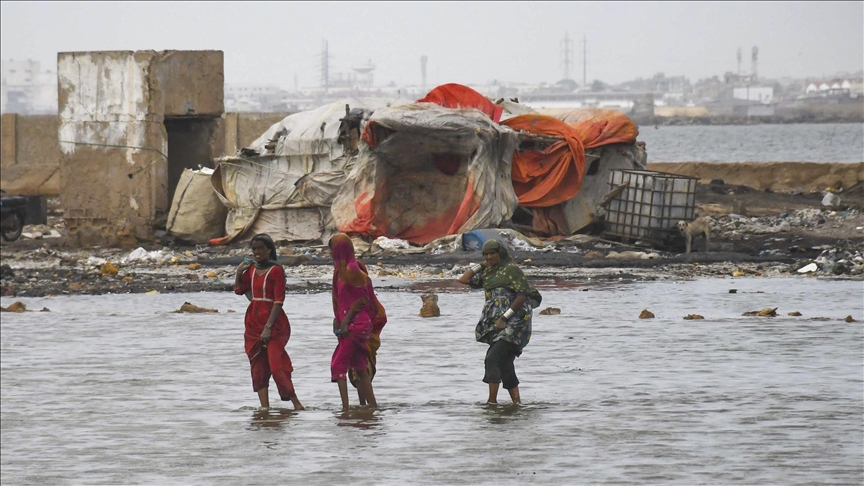ISLAMABAD: The sprawling plains of Pakistan and neighboring India are currently in the grip of a scorching heat wave, which has hit the region quite late this year but will be more severe, according to environment experts.
Pakistan’s weather agency has forecast the ongoing spell of abnormally hot and humid weather to continue until at least the end of the first week of June.
Mercury levels have already touched a rare 53 degrees Celsius (127.4 degrees Fahrenheit) in the Larkana district of the southern Sindh province, followed by 50C (122F) in Jacobabad, 49.5C (121.1F) in Dadu and 49.3C (120.74) in Khairpur.
This scorching wave came on the heels of what was the wettest April in Pakistan’s history, and much later than 2022 when it started in the last few weeks of March, a glaring reflection of the increasing unpredictability of weather patterns.
“When it comes to the impacts of climate change … only unpredictability is certain,” environmentalist Zabardast Khan Bangash told Anadolu.
“We never know when we will swing from heat waves to droughts or unseasonal rains.”
He said the rapidly fluctuating patterns have made it almost impossible even for climate scientists to accurately forecast weather conditions, which is affecting preparedness in vulnerable countries like Pakistan.
“This is all around the globe. We are saying volatile weather everywhere, while other things such as the duration or time of onset of heat waves are also changing,” he said.
For Pakistan, mid-June is expected to bring monsoon rains, which have wreaked havoc in the country over recent years, in terms of human casualties and the destruction of already fragile infrastructure.
Hit to agriculture
All this extreme weather – unseasonal rains, periodic floods, searing heat and lingering dry spells – has a cascading impact on Pakistan’s agriculture sector, which directly employs 38% of its population of some 230 million.
“Agriculture here in Pakistan is still largely traditional, which makes it dependent on all natural factors – climate, weather and water availability,” said Abdul Razzak, an environment expert in Karachi.
“So that makes it particularly vulnerable to the effects of climate change. We can clearly see just how much extreme weather and other climate-related disasters are impacting everything from crop growth to production capacities.”
Among the agricultural products most affected by climate change in Pakistan are mangoes, one of the country’s most prized exports.
Mango production in Pakistan has declined for three consecutive years, and it is all down to the effects of climate change, Waheed Ahmed, head of the Pakistan Fruit and Vegetable Exporters Association, told Anadolu.
“Pakistan produces 1.8 million metric tons of mangoes – 70% in Punjab, 29% in Sindh and 1% in Khyber Pakhtunkhwa,” he explained.
“This year production in Punjab is around 35% to 40% and less than 20% in Sindh, so the total output is expected to be some 0.6 million metric tons lower,” he said.
Keeping this in mind, Ahmed said the export target has been pulled down to 100,000 metric tons, from 125,000 metric tons in 2023, which would generate around $90 million in revenue, but it is still likely to be missed.
Apart from agriculture, Pakistan has also seen the effects of climate change in various other manifestations, such as rampant sea erosion and intrusion that has forced massive internal migration in the south.
There is also a heightened threat of landslides and glacier lake outburst floods in the northern regions of the country, while devastating floods just two years ago – made more severe because of unusually heavy monsoon rain and melting glaciers – claimed hundreds of lives and caused massive economic losses.


